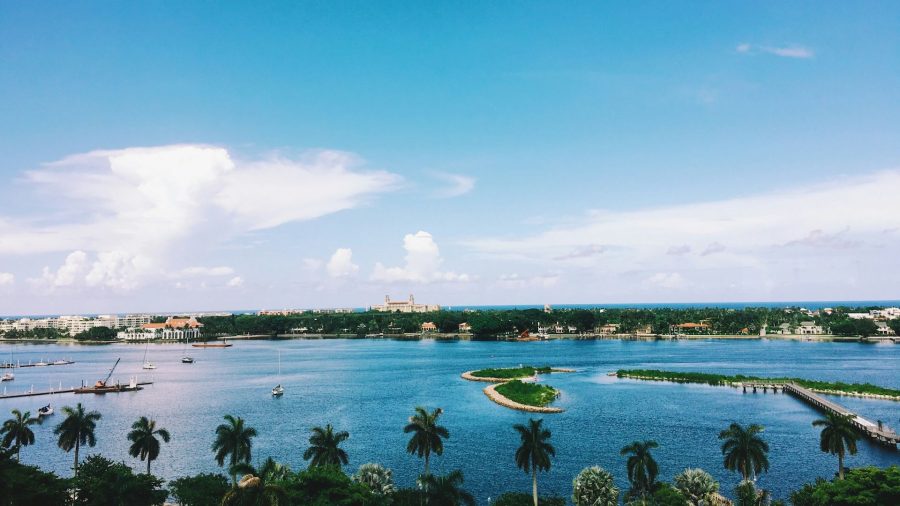Florida has long been a pivotal state in the U.S., not only for its vibrant tourism and retirement community but also for its critical role in immigration. Over the decades, Florida has become one of the most diverse and culturally rich states in the U.S., with millions of immigrants contributing to its economy, culture, and community. With its proximity to Latin America and the Caribbean, Florida has been a natural gateway for immigrants seeking a new life in the U.S.
In this comprehensive blog, we’ll explore U.S. immigration in Florida from several perspectives, including its history, key immigrant communities, the current legal landscape, the economic and cultural impacts, and practical steps for those looking to immigrate to Florida. We’ll also delve into some of the challenges and opportunities immigrants face in the state today.
1. A Brief History of Immigration in Florida
Florida’s history is intertwined with waves of immigration, beginning as early as the 1500s when Spanish explorers, including Juan Ponce de León, arrived on its shores. These early expeditions set the stage for future Spanish settlements and the introduction of diverse groups to the region, including African slaves brought through the transatlantic slave trade.
1.1 The Spanish and Cuban Influence
One of the most significant early immigrant groups to Florida were the Cubans. Florida’s geographical proximity to Cuba facilitated Cuban migration, which began in the 1800s. Following the Cuban War of Independence in the late 19th century, large numbers of Cuban immigrants moved to Florida, especially to cities like Tampa and Key West, which became hubs for Cuban culture and commerce.
The Cuban population surged again following the Cuban Revolution in 1959 when Fidel Castro’s communist regime took power. Thousands of Cubans fled to Florida seeking refuge, particularly in Miami. This mass exodus established South Florida as the heart of the Cuban diaspora in the United States.
1.2 Latin American and Caribbean Migration
Throughout the 20th century, immigration from other Latin American and Caribbean countries like Puerto Rico, Haiti, the Dominican Republic, and Nicaragua continued to rise. The Mariel boatlift in 1980, for example, saw more than 125,000 Cubans flee Cuba to Florida within just a few months. Many Haitians also arrived in the 1980s and 1990s, driven by political instability and economic hardship in their homeland.
2. Florida’s Modern Immigrant Communities
Today, Florida’s immigrant population is one of the largest in the U.S. According to the U.S. Census Bureau, about 4.5 million foreign-born individuals live in Florida, representing nearly 21% of the state’s total population. Immigrants in Florida come from more than 200 countries, with the largest groups hailing from Latin America, the Caribbean, Europe, and Asia.
2.1 Cuban-Americans in Florida
Cuban-Americans remain the most prominent immigrant group in Florida. Roughly two-thirds of the Cuban population in the U.S. resides in Florida, with Miami-Dade County being the epicenter. Cuban culture is deeply embedded in Miami’s food, art, music, and politics. The Little Havana neighborhood in Miami stands as a vibrant cultural hub, showcasing Cuban influence on Florida’s landscape.
2.2 Haitian-Americans
Florida is home to the largest Haitian immigrant population in the United States, particularly in South Florida, where the community has established itself strongly in Miami-Dade and Broward counties. The Haitian community has brought its rich culture, including Creole language, music (like Kompa), and religious practices, particularly in neighborhoods such as Little Haiti in Miami.
2.3 Other Key Communities: Venezuelans, Brazilians, and Nicaraguans
In recent years, Florida has seen a surge of immigrants from countries like Venezuela and Nicaragua due to political and economic crises. Many of these immigrants have settled in Miami, Fort Lauderdale, and Orlando, contributing to the growth of Florida’s Latino population. Venezuelans, in particular, represent one of the fastest-growing immigrant communities in the state.
Brazilian immigrants have also established significant communities, especially in Orlando, which has become a favorite destination for Brazilian tourists and immigrants alike.
3. The Legal Framework of Immigration in Florida
Navigating the U.S. immigration system can be complex and overwhelming. Florida, being a border state with significant immigrant populations, has been at the forefront of U.S. immigration issues. There are several pathways and programs for immigration to Florida, but it’s essential to understand the legal landscape.
3.1 Visa Categories and Green Cards
There are various visa categories under U.S. immigration law. The most common types for individuals moving to Florida include:
- Family-based visas: These are granted to individuals who have family members who are U.S. citizens or lawful permanent residents. This category includes the Immediate Relative Visa and the Family Preference Visa.
- Employment-based visas: These visas are for individuals who have secured employment in the U.S. and are sponsored by their employer. Employment-based visas are divided into several categories, such as EB-1, EB-2, EB-3, EB-4, and EB-5.
- Diversity Visa Lottery Program: Every year, the U.S. runs a lottery program that grants green cards to individuals from countries with low immigration rates to the U.S. Florida receives a portion of these visa lottery winners, contributing to the state’s diverse immigrant population.
- Asylum seekers and refugees: Individuals fleeing persecution in their home countries may apply for asylum in the U.S. Florida, due to its proximity to politically volatile regions, particularly in the Caribbean, has a significant number of asylum seekers.
3.2 Florida’s Stance on Immigration Enforcement
Florida has been at the center of national debates on immigration enforcement, particularly concerning the cooperation between local law enforcement and federal immigration authorities. In recent years, the state has enacted legislation aimed at ensuring compliance with federal immigration laws. For example, in 2019, Florida passed a controversial law banning sanctuary cities and requiring local law enforcement to cooperate with federal Immigration and Customs Enforcement (ICE) agents. This law has been met with both support and opposition across different sectors of Florida society.
4. Economic Impact of Immigration on Florida
Immigrants in Florida are a vital part of the state’s economy. They contribute in various ways, from starting businesses to filling critical labor shortages in agriculture, construction, healthcare, and tourism. According to research by the American Immigration Council, immigrant-led households in Florida contributed $93.2 billion in taxes in 2018, making them a crucial part of the state’s financial landscape.
4.1 Immigrant Entrepreneurs and Small Businesses
Florida is a state known for its entrepreneurial spirit, and immigrants are an essential part of that. Immigrants in Florida are more likely to start businesses than their U.S.-born counterparts. According to the 2020 New American Economy report, more than 45% of all business owners in Miami-Dade County are immigrants.
These businesses range from small mom-and-pop shops to large enterprises. Cuban-Americans, in particular, have been instrumental in starting businesses such as restaurants, retail stores, and logistics companies. Venezuelan immigrants have increasingly made their mark in real estate and construction.
4.2 Labor Force and Key Sectors
Immigrants play a crucial role in Florida’s labor market, particularly in sectors like agriculture, construction, healthcare, and hospitality. The state’s agricultural industry, which is one of the largest in the U.S., relies heavily on immigrant labor, especially during peak harvest seasons for crops like oranges, tomatoes, and sugarcane. Without this labor force, many of Florida’s farms would struggle to maintain production levels.
The construction sector is another area where immigrants fill critical labor shortages. As Florida’s population continues to grow, the demand for new housing and infrastructure has led to a construction boom. Many immigrants work in this sector, providing skilled and unskilled labor that keeps the state’s economy thriving.
4.3 Healthcare and Education Contributions
Immigrants in Florida also contribute significantly to the healthcare sector, both as workers and as consumers. Many immigrants work as nurses, doctors, home health aides, and other essential healthcare providers. Florida’s large elderly population, especially retirees, means that the demand for healthcare services is high, and immigrants fill many of these roles.
Education is another area where immigrants contribute. Many immigrants have made careers as teachers, administrators, and researchers in Florida’s educational institutions. The children of immigrants also represent a large portion of Florida’s student population, enriching classrooms with diverse perspectives and languages.
5. Cultural Impact of Immigration in Florida
Florida’s cultural landscape has been profoundly shaped by its immigrant communities. The state is known for its multicultural festivals, foods, languages, and traditions that stem from the diverse backgrounds of its residents. Immigration has made Florida a melting pot, blending Caribbean, Latin American, European, and African influences into the state’s identity.
5.1 Music and Arts
Florida is home to a thriving arts scene heavily influenced by its immigrant population. Cuban immigrants, for instance, have brought their love of music to Florida, particularly genres such as salsa, rumba, and mambo. Haitian immigrants have introduced Kompa and zouk, enriching Florida’s music scene with Caribbean rhythms.
Miami, in particular, has become a cultural hub for Latin music, art galleries, and film festivals. The annual Calle Ocho Festival in Miami’s Little Havana is a testament to the vibrant Hispanic culture in Florida, featuring Latin music, dance, and food.
5.2 Cuisine
One of the most apparent contributions of immigrants to Florida is its diverse culinary scene. From Cuban sandwiches and Haitian griot to Venezuelan arepas and Brazilian churrasco, Florida’s food culture is a testament to its immigrant heritage. Miami is home to countless ethnic restaurants where visitors and locals alike can sample foods from all over the world.
5.3 Language and Religion
Florida is one of the most linguistically diverse states in the U.S., with more than 27% of residents speaking a language other than English at home. Spanish is the second most spoken language in the state, reflecting the large Latino population. Creole is also widely spoken, particularly in South Florida’s Haitian communities.
Religion plays a significant role in the cultural lives of immigrants in Florida. Catholicism is prevalent, especially among Latin American immigrants, while Protestantism, particularly Pentecostalism, is common among Haitian immigrants. Florida is also home to growing Muslim, Jewish, and Hindu communities, reflecting the state’s increasing diversity.
6. Challenges Faced by Immigrants in Florida
While Florida is an attractive destination for immigrants, it is not without its challenges. Immigrants face several hurdles, from navigating complex legal processes to overcoming language barriers and securing employment.
6.1 Legal and Bureaucratic Obstacles
One of the most significant challenges for immigrants in Florida is navigating the U.S. immigration system. The process of obtaining legal residency, citizenship, or work permits can be long, expensive, and complicated. Changes in immigration policies, such as the tightening of asylum regulations, have made it harder for some immigrants to gain legal status in the U.S.
6.2 Language Barriers
Although Spanish is widely spoken in Florida, language barriers can still be an issue for non-English speaking immigrants. Access to English as a Second Language (ESL) classes, while available in many parts of the state, is not always sufficient to meet the demand. Limited English proficiency can also make it difficult for immigrants to access healthcare, education, and legal services.
6.3 Economic Inequality and Employment
While immigrants contribute significantly to Florida’s economy, many face economic inequality. Low-wage work, lack of benefits, and job insecurity are common challenges, particularly for undocumented immigrants. Although immigrant-owned businesses have made strides, immigrants are still more likely to work in lower-paying jobs and have higher rates of poverty than native-born residents.
7. The Future of Immigration in Florida
The future of immigration in Florida will likely be shaped by several factors, including federal immigration policy, economic conditions, and political trends. Florida’s growing Latino and immigrant populations will continue to influence the state’s culture, economy, and politics.
7.1 Changing Demographics
Florida’s demographics are shifting, with Latino and immigrant populations growing at a faster rate than the non-Hispanic white population. This change will have long-term implications for the state’s political landscape, as Latino and immigrant voters become an increasingly powerful voting bloc.
7.2 Political and Social Movements
Immigration will continue to be a central issue in Florida’s politics. Pro-immigrant advocacy groups are working to ensure that immigrants’ rights are protected and that they have access to resources such as education, healthcare, and legal services. At the same time, opposition to immigration remains strong in some parts of the state, especially concerning undocumented immigration and immigration enforcement.
7.3 Technological Advancements and Immigration Policy
The intersection of technology and immigration policy may also shape the future of immigration in Florida. Programs that use artificial intelligence and data analytics to process immigration applications faster and more efficiently could streamline the immigration process. Florida, with its significant immigrant population, could benefit from such technological advancements in easing the burden of long processing times.
Some Closing Thoughts
U.S. immigration in Florida is a complex and multifaceted issue that has shaped and continues to shape the state in countless ways. From the waves of Cuban immigrants fleeing communism to the more recent influx of Venezuelans and Nicaraguans, immigration has brought economic growth, cultural diversity, and social challenges to Florida.
As Florida’s immigrant communities continue to grow and evolve, they will remain a critical part of the state’s identity. While challenges remain, including navigating the legal landscape and addressing economic inequality, the contributions of immigrants to Florida’s economy, culture, and society are undeniable. For those considering immigrating to Florida, understanding the legal framework, economic opportunities, and cultural landscape can provide a clearer path forward in this vibrant and diverse state.







